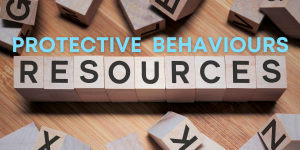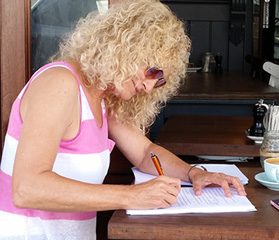

Protective Behaviours education (PBs) empowesrs children to break the silence, to use the right safety language and speak up about why they are feeling unsafe.
At my book launch of Lottie’s Big Feelings in February 2022, Andrea Musulin, Protective Behaviours author and trainer revealed an overwhelming statistic that 20 children had been subjected to interviews about child sexual abuse (CSA) from December to early February 2022 in the local police district. Andrea also revealed that sadly many of those interviews and disclosures would not go anywhere because the children were not empowered enough to give enough evidence to allow police to move onto the next level.
We don’t know what will happen to these children, but it is a wakeup call that unless communities empower children with their right to feel safe, we are going to hear of many more children who will be traumatised by child sexual abuse and not receive the support from an institution that wants to investigate further but simply can’t because children are not empowered with the knowledge.
So, what can be done?
In the home, parents/carers and significant family members are the first and ongoing educators. Through those shared experiences and daily interactions, children can learn and develop age-appropriate body safety skills.

Teaching Protective Behaviours (PBs) at home
PB parent resource WA Department of Education:
This resource is designed as a guide to protective behaviours for parents and carers.
Protective behaviours Parent resource
Schools and parents working together to help keep children safe
Protective Behaviours in Schools
The Protective behaviours (PBs) educational program is mandatory in WA and other parts of Australia. In WA, teachers in all schools are to teach the PBs program to students from early years to high school.
Teachers have access to a range of protective behaviours educational resources to teach the program. Protective behaviours education focuses on teaching students how to identify and avoid a range of potentially unsafe situations, including sexual abuse.[1]https://gdhr.wa.gov.au/-/protective-behaviours
As with all aligned curriculum subjects, the learning and development of PBs education can provide children to establish a solid foundational beginning in the early years. These age-appropriate learning concepts are embedded during the school years, providing students with the acquired knowledge to become effective and assertive in using these PBs concepts to keep themselves and others safe.
As Australia moves from a reporting (CSA) perspective to a cultural shift involving an – all of school, community approach to child safe (focused) organisations, [2]https://christinecamp.com.au/2021/11/13/children-are-our-future-what-the-hell-happened/ the PBs education program is going to play a pivotal role in changing social norms; those unwritten rules of what has been acceptable in silencing children and preventing them from disclosing. When we empower children to break the silence, ask for help, give them the knowledge to speak about why they feel unsafe and support them, we are enabling them with the right to feel safe.
The PBs program is one of many programs that enhances the safety and wellbeing of children. It’s not just a one-off conversation, it’s learning a new language that is socially embedded at home and implemented into the school culture. If we are playing our part as an educator and advocate in whatever role we have in a child’s life, can you see how it will impact that child? How it will impact a family, a classroom, a sporting team, and a community? Can you see it?
Check out this blog What is Protective Behaviours.

Hello and welcome to my blog.
I love writing and sharing my journey as an author and encourage others to write their stories too.